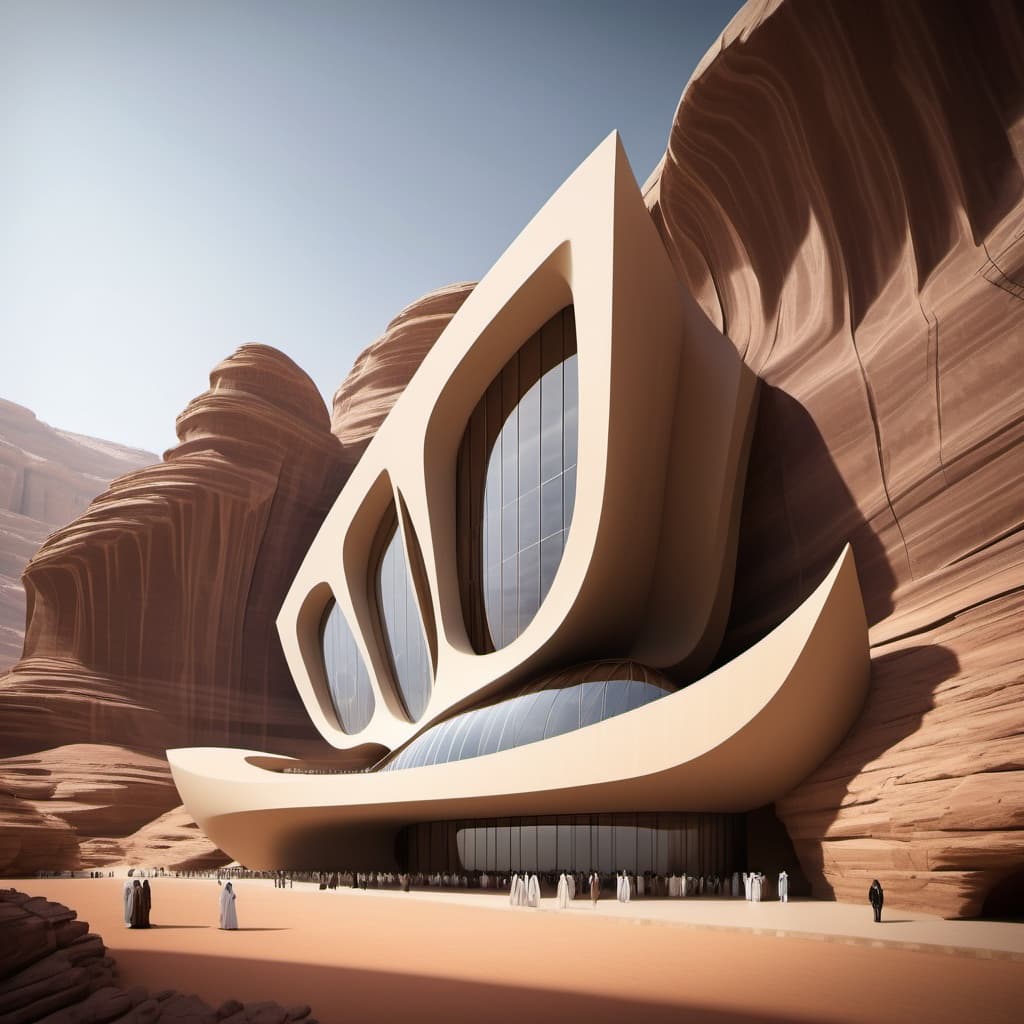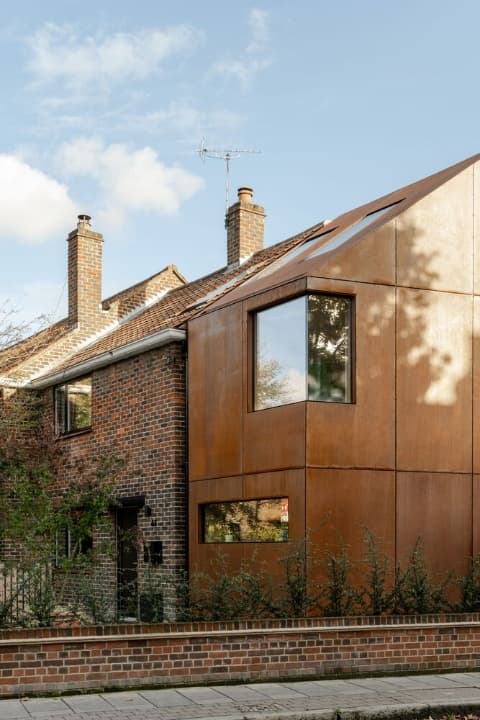

Sculpture Museum in Al-Ula Desert
In the heart of Al-Ula Desert, where the earth meets the sky, a Sculpture Museum blends seamlessly with the surrounding natural landscape, offering a unique experience for its visitors. The design of the museum is divided into two main parts: the external section, harmonizing with the desert environment, and the internal section, nestled within the mountains, showcasing sculptures carved directly into the rock. 1. External Section: Merging Rocks and Dunes The external part of the building draws inspiration from two main natural elements: Concept 1: Mountain Rocks The design of the external structure is inspired by the flowing, organic forms of mountain rocks. The building appears as if it has emerged naturally from the surrounding mountains, with smooth, continuous curves that mimic the shape and texture of the rocky landscape. This organic form represents the strength and resilience of the mountains, integrating the museum into the natural topography as a seamless extension of the land. Concept 2: Desert Dunes The second concept draws from the ever-shifting, flowing nature of the desert dunes. The building’s design captures the smooth, dynamic curves of the sand as it moves with the wind, creating a fluid, organic form. These curves not only evoke the constant movement of the desert landscape but also symbolize the passage of time. 2. Internal Section: Sculptures Carved in the Mountains The internal section of the museum is a unique experience where art and nature coexist. The concept behind this area is the integration of art directly into the rock formations. Rock Sculptures Inside the mountains, the walls of the museum are transformed into exhibition spaces, showcasing sculptures directly carved into the rock. This concept aims to create an immersive experience, where visitors explore artworks that are part of the natural environment, blurring the lines between the natural and the man-made. These sculptures will not only reflect the rich cultural heritage of the region but also highlight the harmonious relationship between art and nature. The integration of the sculptures into the very rock that surrounds them makes the museum a living part of the landscape. Environmental Interaction The interior design also allows for natural light to filter through openings in the rocks, casting dynamic shadows and creating ever-changing light patterns throughout the day. This interaction with light adds a spiritual and ephemeral quality to the museum, emphasizing the deep connection between art, nature, and time. Visitors will experience a space that evolves with the movement of the sun, bringing a sense of life and transformation to the museum’s atmosphere.
